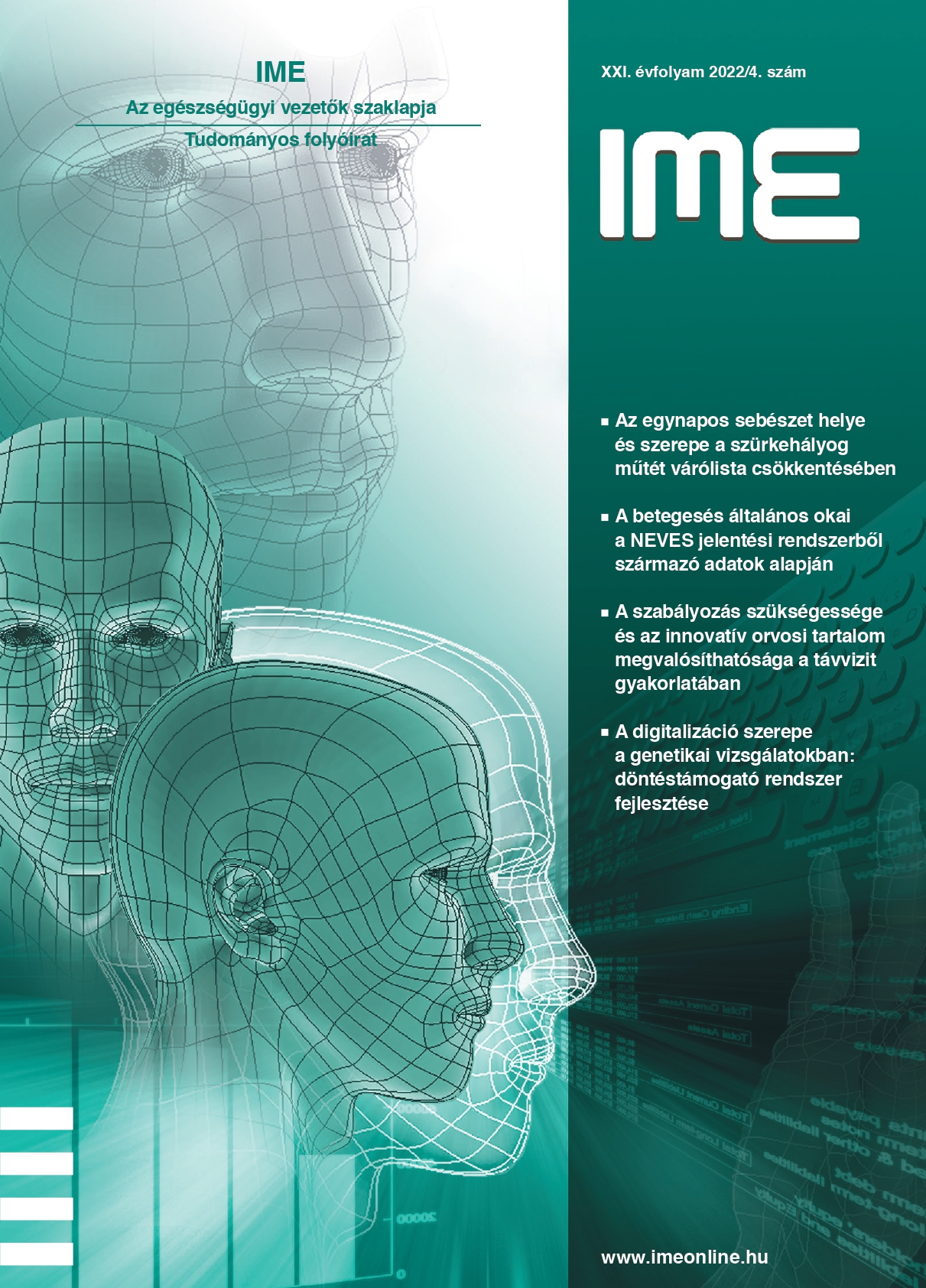A dolgozói bántalmazás leggyakoribb okai az egészségügyben, a kommunikáció és a kockázatértékelés szerepe a megelőzésben
Absztrakt
Bevezetés: Az egészségügyi dolgozók bántalmazásának problémaköre nem újszerű jelenség, ráadásul az utóbbi évtizedekben jelentős emelkedés tapasztalható. A munkahelyi bántalmazásnak kedvezőtlen hatásai vannak a személyzetre, ami jelentősen ronthatja az egészségügyi ellátás minőségét, betegbiztonsági szempontból magas kockázatot rejt, kedvezőtlenül befolyásolhatja a betegelégedettséget.
Célkitűzés: A publikáció célja, hogy összefoglalja az egészségügyi intézményekben bekövetkező bántalmazások hátterében álló leggyakoribb általános okokat, felhívja a figyelmet a kockázatértékelés fontosságára és a dolgozói bántalmazás megelőzésében alkalmazható kommunikációs eszközökre.
Módszer: A NEVES jelentési rendszerbe érkezett, 137 dolgozói bántalmazás adatainak statisztikai elemzését végeztük el. Az okok feltárásához és a megelőzési lehetőségek azonosításához a klasszikus minőségfejlesztési eszköztárat használtuk, hazai és nemzetközi szakirodalmi kutatást végeztünk, valamint a témában gyakorlati tapasztalattal rendelkező szakértőkkel folytattunk fókuszcsoportos megbeszéléseket.
Eredmények: A dolgozókat ért atrocitások legfontosabb okait 12 főbb kategóriába soroltuk. Az esetek jelentős részében a kommunikációval összefüggő problémák felelősek az agresszió bekövetkezéséért.
Megbeszélés: A dolgozók nem megfelelő kommunikációja a betegben, vagy a hozzátartozójában feszültséget kelthet, ami bántalmazáshoz vezethet. A dolgozóknak időben fel kell ismerniük a közelgő erőszak jeleit, hogy megfelelő kommunikációval elkerüljék annak bekövetkeztét. Az agresszív viselkedés kockázatát becslő felmérések bevezetése, és a kockázat ismeretében meghozott megelőző intézkedések szintén hozzájárulhatnak a bántalmazások elkerüléséhez.
Következtetés: Az események bekövetkezését nem minden esetben lehet elkerülni, az előfordulásuk azonban részben megelőzhető, számuk megfelelő intézkedésekkel csökkenthető. A rendszeres adatgyűjtés és elemzés lehetőséget ad az intézményeknek a fejlesztendő területek meghatározásában és az újabb esetek előfordulásának kivédésében.

This work is licensed under a Creative Commons Attribution-NonCommercial-NoDerivatives 4.0 International License.




